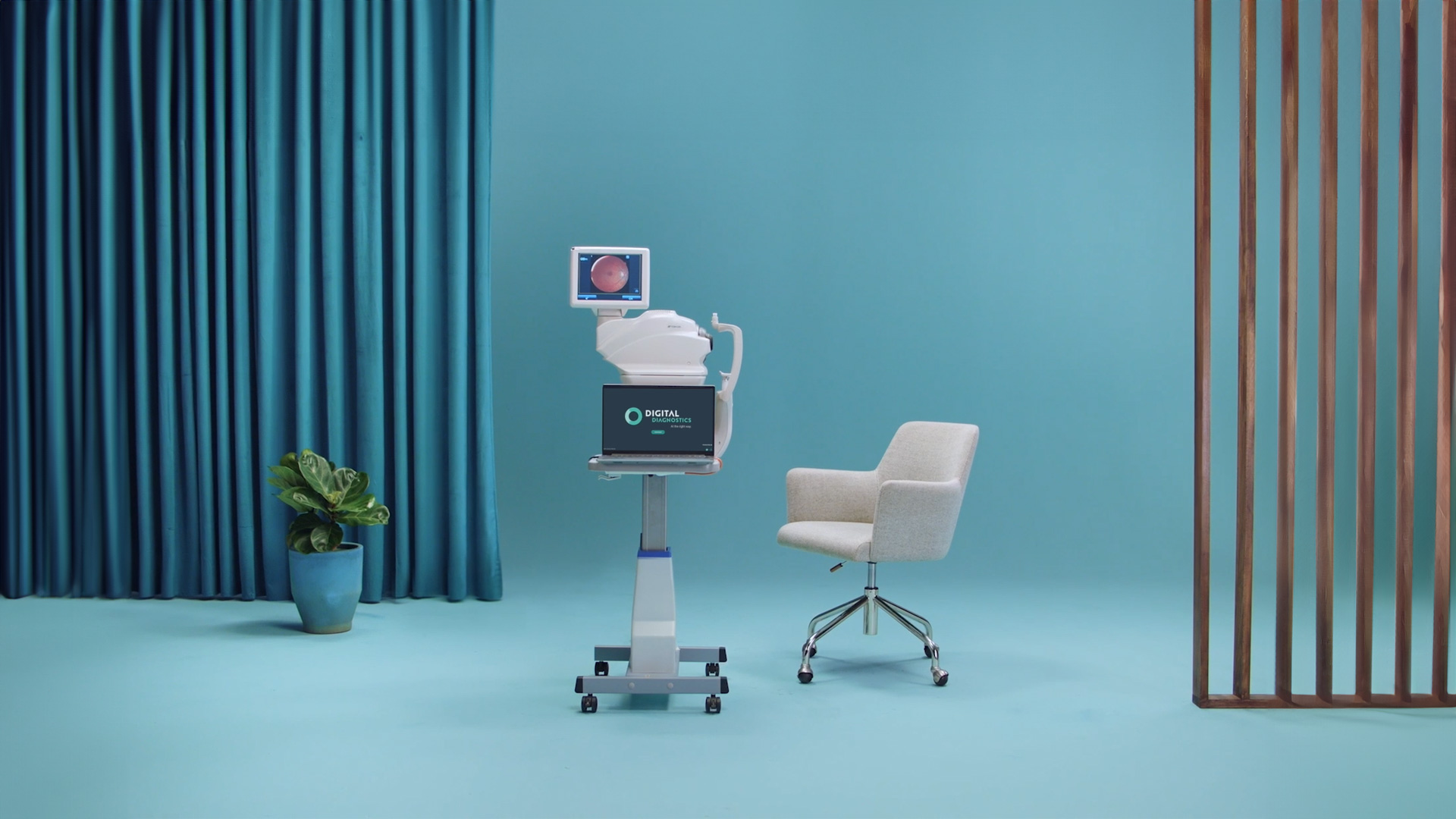
Digital Diagnostics’ webinar, “Scaling AI in Primary Care: OhioHealth’s Journey to Smarter Diabetic Retinopathy Detection"
The webinar featured Dr. Kathleen Provanzana, Medical Director at OhioHealth, and Michael D. Abramoff, MD, PhD, Founder and Executive Chairman of Digital Diagnostics, discussing how OhioHealth is transforming diabetic retinopathy testing with AI. They specifically highlighted how the health system has streamlined primary care workflows, delivered rapid point-of-care results, and improved early disease detection across its facilities – all through the implementation of innovative AI technology.
Challenges in Diabetic Retinopathy Testing Prior to Implementing LumineticsCore
The traditional eye exam for diabetes presents significant challenges not only for patients but also for healthcare providers. During the webinar, Dr. Kathleen Provanzana outlined the primary challenges her team faced with traditional diabetic retinopathy testing:
- Low Testing Rates: Only about 35% of OhioHealth’s patients with diabetes were completing their recommended eye exams.
- Operational Inefficiencies: There was a lack of a team-based approach and challenges with managing open encounters.
OhioHealth is not alone; healthcare systems across the country face challenges in diabetic retinopathy testing. Every year over 60,000 people go blind from diabetic retinopathy, a complication of diabetes that can be prevented if diagnosed in the early stages. Despite recommendations for those with diabetes to have annual eye exams, about 85% skip these crucial tests, often due to the inconvenience and time-consuming nature of traditional examination methods.
For Dr. Provanzana and her team, these realities led to the critical question: How can we improve the efficiency of our clinics while also improving the quality of care?
Implementing LumineticsCore®
In 2022, OhioHealth implemented LumineticsCore®, Digital Diagnostics’ AI-powered solution for diabetic retinopathy diagnosis. After evaluating both tele-retinal support and AI-driven solutions, OhioHealth selected LumineticsCore for its ability to deliver results during the patient encounter – a crucial feature for OhioHealth, according to Dr. Provanzana, who emphasized the importance of choosing a solution that provides a diagnosis at the point-of-care. This point-of-care diagnosis is not only convenient for patients but helps reduce the burden on ophthalmologists so they can focus on complex cases. Additionally, referral staff are only involved when a positive diagnosis is made, reducing unnecessary administrative burden.
Today, OhioHealth has deployed 40 LumineticsCore cameras across its facilities, providing critical access to the eye exam for diabetes in clinics where true care gaps exist.
Transformative Results
During the webinar, Dr. Provanzana presented data highlighting the impact of LumineticsCore at OhioHealth. Specifically, within 12 months of implementing LumineticsCore, OhioHealth saw a 162% increase in diabetic eye exams as well as a 1.7 increase in positive diagnoses year-over-year.
Key Takeaways
According to Dr. Provanzana, several factors contributed to the successful implementation of LumineticsCore at OhioHealth:
- Engaging providers who saw the value in primary care-based testing.
- A phased rollout to support learning and adaptation.
- Continuous iteration based on real-time feedback to fine-tune workflows and improve both patient and provider experiences.
- Prioritizing sites open to evolving workflows.
She concluded her presentation by emphasizing that once staff become familiar with LumineticsCore, the AI-powered exam becomes as routine as taking vital signs. Her advice to others considering innovative solutions:
“Don’t let perfect get in the way of good. Progress begins with action.”
Watch the webinar for more insights into how OhioHealth is scaling AI in primary care.
Learn more about LumineticsCore, our AI-powered diagnostic solution for diabetic retinopathy.